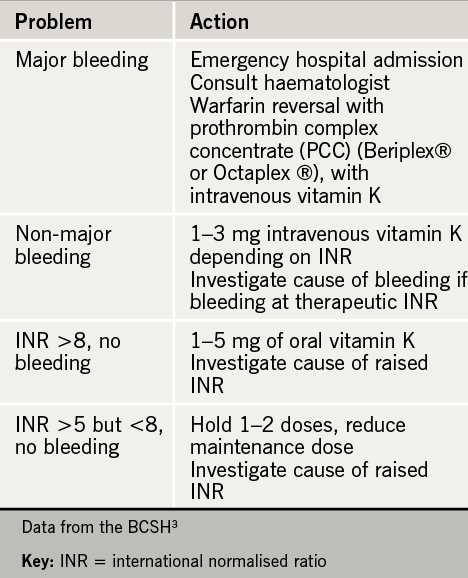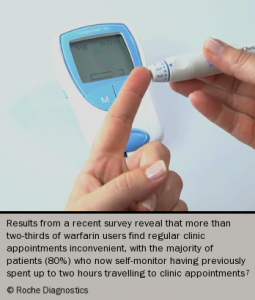Patients requiring cardioversion
These patients should have a therapeutic INR (>2.0) for at least three weeks before and four weeks after cardioversion to reduce the risk of embolisation. INR checks should be performed at least weekly during this period. As INR values do tend to fluctuate it is useful to aim for target INR between 2.5 and 3.0 to avoid dips below 2.0 that result in cancellation of the procedure.

If the patient has been in AF for a short period only, and cardioversion is performed after transoesphageal echocardiography has shown no evidence of intra-atrial thrombus, anticoagulation is not mandatory.
High INR values and bleeding in warfarinised patients
The British Committee for Standards in Haematology Guidelines on oral anticoagulation with warfarin (4th edition)3 has guidance on high INR and bleeding to which the reader is directed for more complete information (see also table 3). This is provided for educational purposes only – specialist advice should always be sought when required.
Interruption of anticoagulation for invasive procedures
For dental procedures, including extraction, warfarin should not be stopped, but the INR should be <4.0. Other low risk procedures, such as skin biopsy and endoscopy, without biopsy can also be performed without stopping warfarin.
If a reduction in INR to <1.5 is required, warfarin should be stopped three to five days (depending on INR and target range) before the procedure. Depending on thrombotic risk, (including CHADS2 or CHA2DS2-VASc score), bridging anticoagulation with heparin or low molecular weight heparin may be advisable. This is a specialist area and it is best to seek advice from a haematologist for an appropriate regime, especially if the patient has any history of thrombotic events.
Self testing

There are a number of reliable INR monitors available that use capillary blood samples and are suitable for home INR testing. The CoaguChek® XS (see figure 3) has built in quality control material and gives good correlation with venous blood samples in patients who are stably anticoagulated. Patients on long-term anticoagulation may wish to purchase such a machine. The disposables required can be provided on NHS prescription. Patients who wish to self-test or self-manage should discuss this with their anticoagulant clinic before purchase of a machine, and should remain under the overall care of an anticoagulant service or their GP. The performance of the machine should be checked in the clinic every six months.
